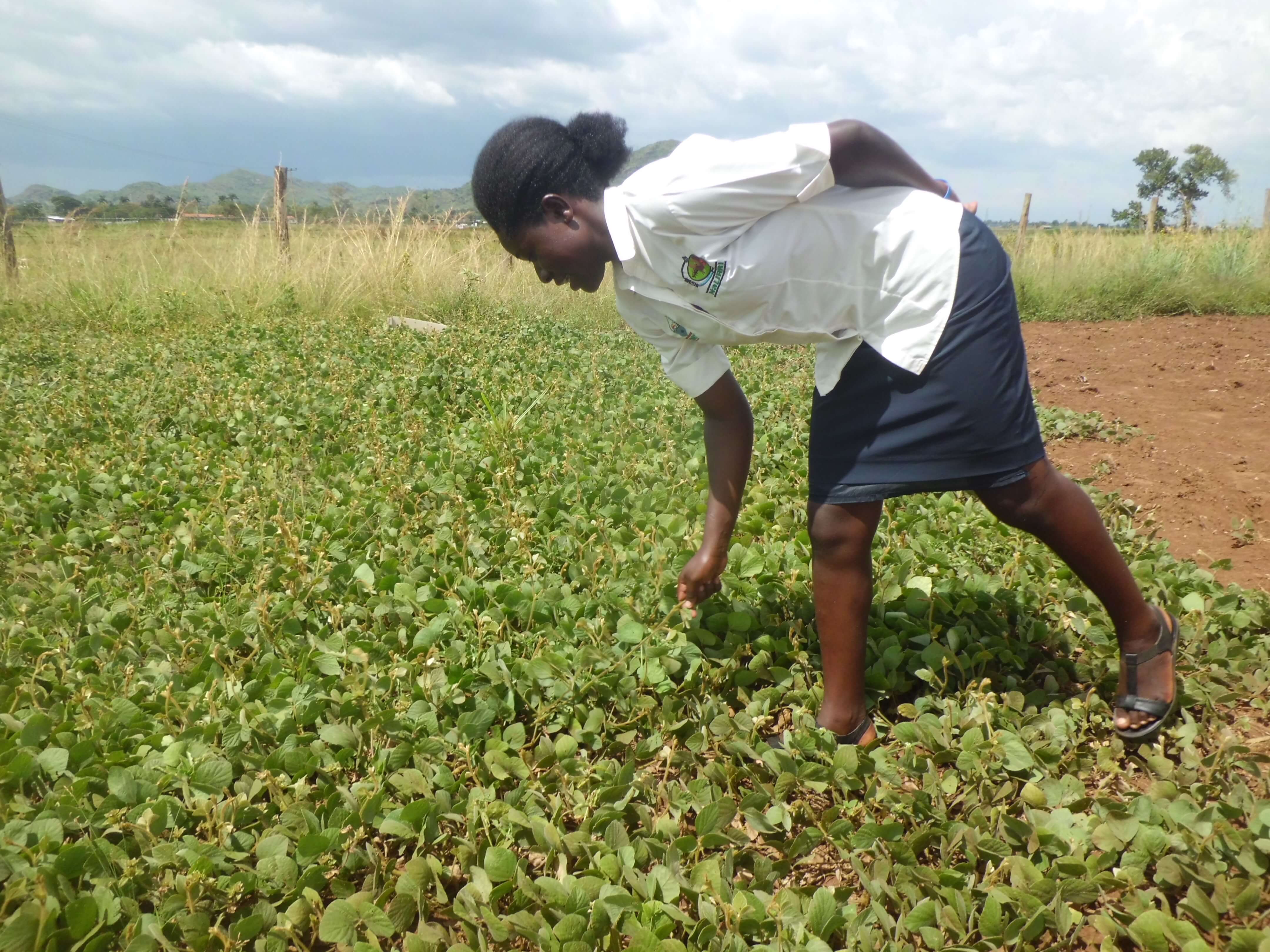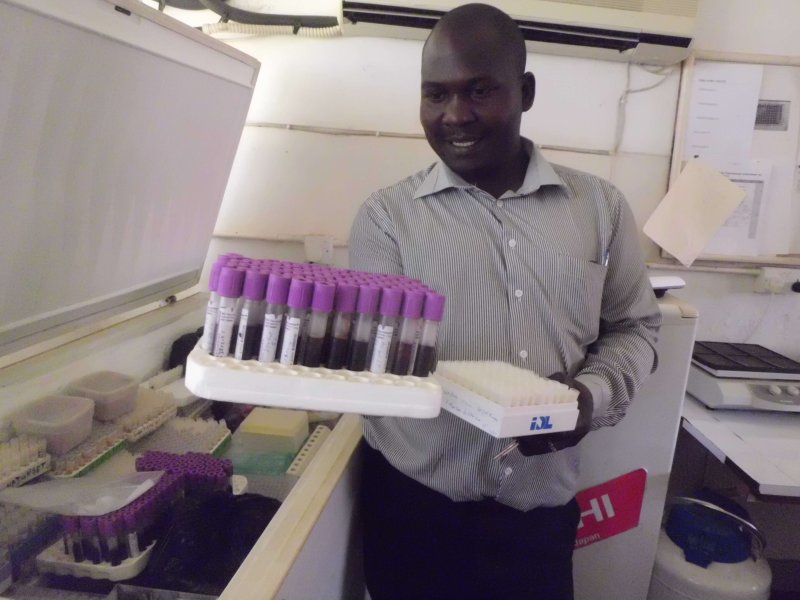In Africa, scientific research involving biotechnology innovations in agriculture has largely focused on finding ways to produce better crops. But, increasingly, researchers in animal sciences are exploring the potential of these new technologies in breeding and disease resistance.
Those efforts are bolstered by the institutions such as the International Livestock Research Institute in Nairobi, Kenya, where breeding genes are developed, said Dr. Halid Kirunda, director of the Mbarara Zonal Agricultural Research and Development institute (MBAZARDI) in Western Uganda.
Ugandan scientists from the National Agricultural Livestock Research Institute (NaLRI), in Eastern Uganda, are using genetic material obtained from the ILRI in their efforts to develop an ant tick vaccine to aid local livestock farmers.
“We have antigens which can be used to produce candidate vaccines for tick borne diseases affecting animals in the cattle corridor of Uganda. Once the vaccine is ready for use we shall export it to other African countries suffering the same challenge,” Kirunda said. “This will not require any law for commercialization because application of biotechnology is being applied in the vaccine development process indirectly.”
Other initiatives include growing bacteria in the laboratory to improve milk production in cows as well as use of GMO bacteria for improved yield from pigs.
And while there have been ethical concerns expressed regarding the use of gene editing and other new technologies with animals, Kirunda is not concerned as long as the research focuses on beneficial outcomes and is approved by scientific ethical reviews.
Some argue that new technologies already are making an impact on livestock productivity in developing nations. Such was the argument made in a recent article by Dr. Andualem Tonamo of the department of Animal and Range Sciences at Madawalabu University in Ethiopia.
He pointed out that scientists in most African laboratories have been using embryo transfer in animal breeding. They also are using molecular DNA markers to improve breeding results. And in the arena of animal health, newer technologies are improving the ability to diagnose and treat diseases. Tonamo expects these trends to grow in coming years, with the potential to greatly increase the value of continent’s livestock sector.

Here’s a look at some of the research areas:
Molecular markers
Five African nations, Kenya, Cameroon, Chad, Nigeria and Togo, are engaged in the use of molecular makers in animal breeding, according to Kirunda.
Molecular marker information has not yet been widely integrated into breeding programs in developing countries, but marker-assisted selection can accelerate the rate of genetic progress by enhancing the accuracy of breeding programs. The benefits are greatest for traits with low heritability and which are unavailable before sexual maturity.
ILRI’s programs focus on the characterization of local poultry in Cambodia, Laos, Vietnam, Egypt, Ethiopia, Kenya and Uganda. Work also is underway on marker identification for beneficial traits, including trypanotolerance – which helps cattle survive in areas infested with tsetse flies.
Animal nutrition and health
In animal nutrition, biotechnology has been used to improve grass species such as elephant grass for improved nutrition through protection of protein, amino acids and use of enzymes to improve the availability of nutrients from feed and to reduce the wastage of the feed and fodder.
Also under development are diagnostic tests using biotechnology to identify disease-causing agents. These efforts include methods to help authorities identify the origin of an outbreak. This is particularly important for epidemic diseases such as foot-and-mouth disease in which pinpointing the source of the infection can significantly improve disease control.
Molecular diagnostic technologies that are either already in use or being tested in low-income regions include polymerase chain reaction (PCR), monoclonal antibodies and recombinant antigens. These efforts have been aided by the availability of reliable and affordable laboratory equipment provided by international organizations such as the Food and Agriculture Organization of the United Nations.
The FAO and the World Health Organization also have trained African scientists in molecular diagnostics in animal diseases. They’re deleting genes that determine the virulence of a pathogen, thus producing non-pathogens that can be used as live vaccines. This strategy has been used to develop vaccines against the herpes viruses that cause pseudorabies in pigs and infectious bovine rhinotracheitis in cattle.
Animal reproduction, genetics and breeding
Dr. Tonamo, in his publications, explains that scientists use reproductive biotechnology in livestock to increase production through improved genetic material. This is accomplished largely through artificial insemination. The technology is increasing used in cattle, pigs, sheep and goats.
One of the major reproductive technologies that can facilitate genetic improvement in cattle is embryo transfer, the hormonal manipulation of the reproductive cycle of the cow. It induces multiple ovulations, coupled with artificial insemination and embryo collection, to obtain multiple offspring from genetically superior cows.
The embryos are transferred into other cows considered to be genetically inferior. The embryos also can be frozen for later transfer or sale.
African scientists also carry out in vitro fertilization by obtaining unfertilized eggs from ovaries of live donor animals gathered by a technique referred to as “ovum pickup”. The oocytes are matured in an incubator and fertilized with sperm. The resulting zygotes are incubated in the laboratory to come up with a superior animal.
Another recent technology being embraced by scientists is Africa is cloning technique used to increase the genetic contributions of elite animals.
It can be used for conservation as well as propagation of endangered species. It may be used as a tool for the production of stem cells for therapeutic purposes, as therapeutic cloning.
Scientists believe cloning holds the promise of bypassing conventional breeding procedures to allow creation of thousands of precise duplicates of genetically engineered animals.
Lominda Afedraru is a freelance science journalist in Uganda who specializes in agriculture, health, environment, climate change and marine science. Follow her on the Daily Monitor web site www.monitor.co.ug, Facebook or Twitter @lominda25.































